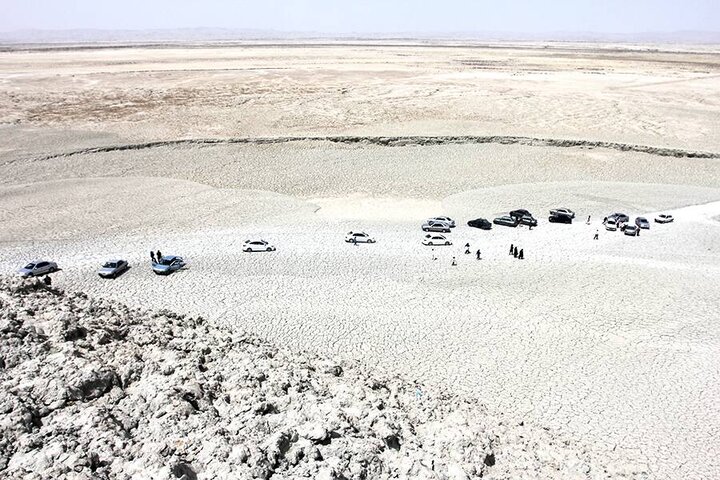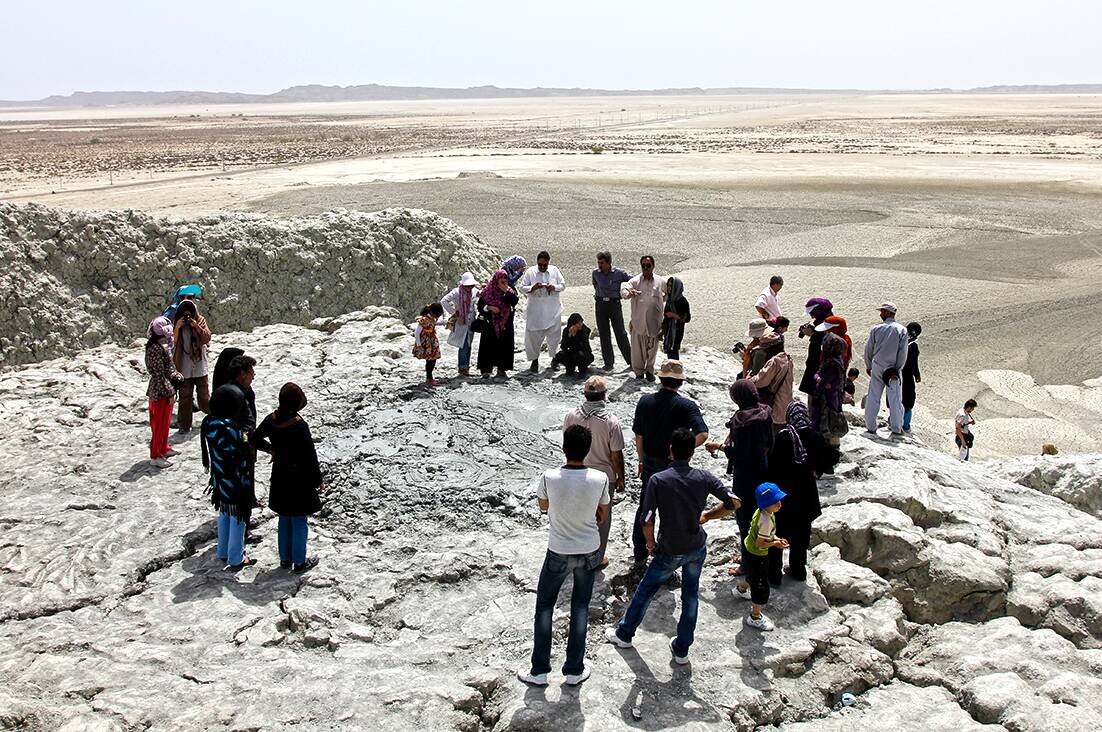TEHRAN – Nestled in the heart of Iran’s Baluchestan region, the Mud Volcano, locally known as “Panag”, continues to captivate the imaginations of travelers with its rare and mesmerizing geological phenomenon.
Beyond its geological significance, the Mud Volcano has become a focal point for various purposes, including pottery, gas production, and even therapeutic mud applications.
Drawing tens of visitors daily, this natural attraction offers a unique scene that combines mud extrusions, gas emissions, and the occasional ground shake.
That phenomenon stems from some mud volcano springs, which are situated on a flat surface, with three small hills dominating the landscape.
One of these hills resembles an active volcano, while the others remain dormant. The mud, gray and composed of clay and marble, emerges with a cold, pressurized force, accompanied by a distinctive sound reminiscent of bursting bubbles. This occurrence repeats approximately every fifteen minutes, synchronized with a subtle soil shake.
As mentioned by Visit Iran, experts believe that the Mud Volcano is a direct result of tectonic activities in the region, highlighting the geological complications associated with the area's oil and gas reserves. The gases emitted during these eruptions include methane, carbon dioxide, nitrogen, and carbon monoxide, contributing to the uniqueness of the phenomenon.

Local authorities have recognized the tourism potential of this natural wonder and have established facilities to enhance the visitor experience, making it more accessible and enjoyable.
The site is surrounded by vast wilderness, adding to the allure of the Mud Volcano as a destination for nature enthusiasts and curious travelers. The correlation between the geological complexity of the region and its abundant oil and gas reserves has turned this location into a particular phenomenon, making it not only a geological wonder but also a key point of interest for those seeking a unique and educational travel experience.
The collective province -- Sistan in the north and Baluchestan in the south -- accounts for one of the driest regions of Iran with a slight increase in rainfall from east to west, and an obvious rise in humidity in the coastal regions. In ancient times, the region was a crossword between the Indus Valley and the Babylonian civilizations.
The province possesses special significance because of being located in a strategic transit location, especially Chabahar, which is the only ocean port in Iran and the best and easiest access route of the middle Asian countries to free waters.
The vast province is home to several distinctive archaeological sites and natural attractions, including two UNESCO World Heritage sites, namely Shahr-e-Soukhteh (Burnt City) and Lut desert.


No comments:
Post a Comment